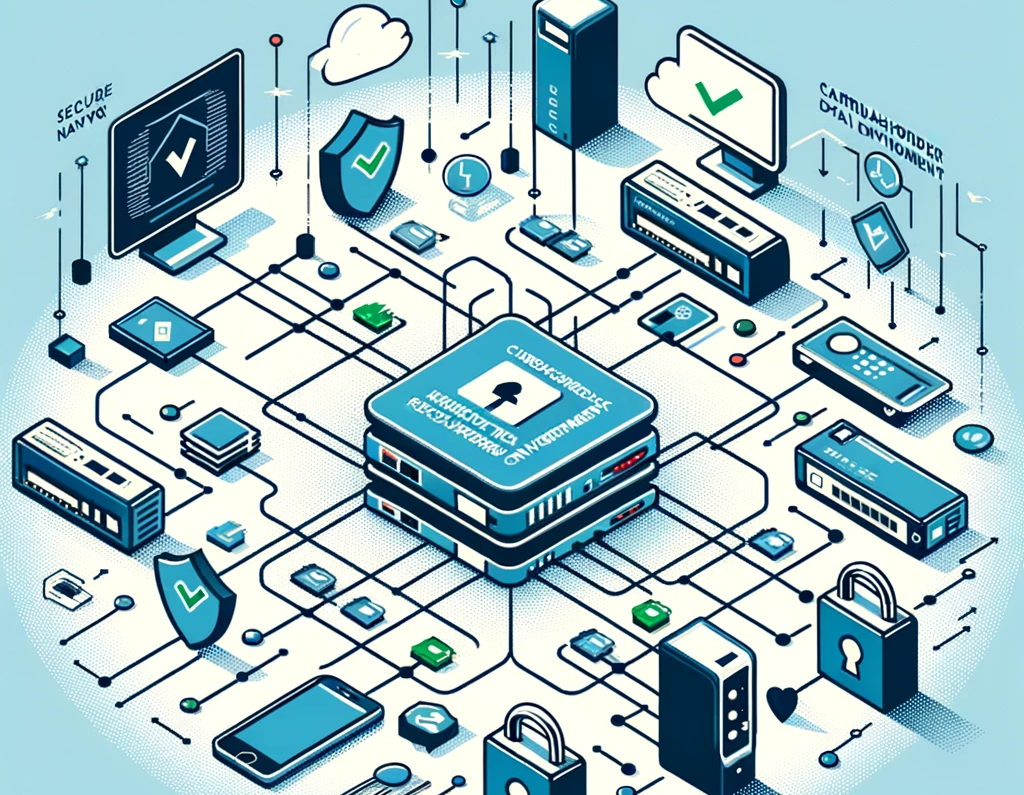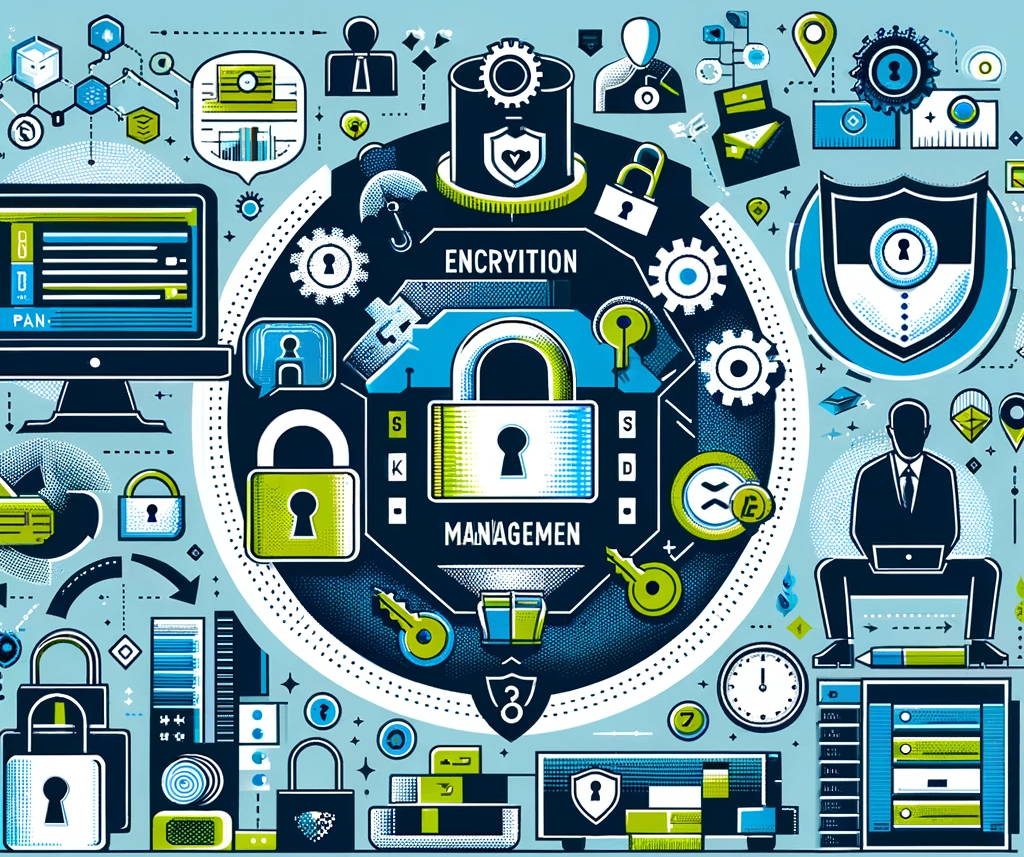In the world of payment card security, PCI DSS v4 Requirement 2 plays a crucial role in ensuring the secure configuration and management of system components. This requirement focuses on establishing strong security practices for all system components involved in processing, storing, or transmitting cardholder data. By adhering to the guidelines outlined in Requirement 2, organizations can significantly reduce the risk of data breaches and protect sensitive customer information.
In this blog post, we will dive deep into the key aspects of PCI DSS v4 Requirement 2, exploring the essential processes, mechanisms, and best practices that organizations must implement to maintain a secure environment. From documenting security policies and procedures to configuring system components securely, managing vendor defaults, and securing wireless environments, we will cover all the critical elements of this requirement.
Whether you are a merchant, service provider, or any other entity involved in handling payment card data, understanding and implementing PCI DSS v4 Requirement 2 is vital to your organization's security posture. Join us as we unravel the complexities of this requirement and provide you with actionable insights to help you achieve and maintain compliance. Let's dive in and discover how to master the secure configuration and management of system components in the world of PCI DSS v4.
Requirement 2.1: Processes and mechanisms for securely configuring and managing system components are defined and understood.
Purpose:
Requirement 2.1 ensures that organizations have well-defined and comprehensible processes and mechanisms for securely configuring and managing system components. This requirement establishes a strong foundation for system security by ensuring that all relevant parties understand their roles and responsibilities in protecting cardholder data.
Good Practice / Guidance:
2.1.1 Documentation:
All security policies and operational procedures identified in Requirement 2 should be documented, kept up to date, actively used, and known to all affected parties. It is crucial to update these documents promptly after any changes occur, rather than only on a periodic basis. This ensures that the organization's security practices remain current and effective in the face of evolving threats and system changes.
2.1.2 Roles and Responsibilities:
Roles and responsibilities for performing activities in Requirement 2 should be clearly documented, assigned, and understood by all relevant personnel. These roles and responsibilities can be documented within policies and procedures or maintained in separate documents. To ensure accountability, organizations should consider having personnel acknowledge their acceptance and understanding of their assigned roles and responsibilities.
By clearly defining and assigning roles and responsibilities, organizations can ensure that all personnel involved in configuring and managing system components are aware of their duties and can be held accountable for maintaining the security of cardholder data. This helps prevent critical security tasks from being overlooked or neglected, reducing the risk of vulnerabilities being introduced into the system.
Incorporating these practices into the organization's security culture and regularly communicating the importance of adhering to policies and procedures will help maintain a strong security posture. Providing training and support to personnel tasked with configuring and managing system components will further enhance the effectiveness of the organization's security measures.
Requirement 2.2: System components are configured and managed securely.
Purpose:
Requirement 2.2 focuses on ensuring that all system components are configured and managed in a secure manner. This requirement aims to reduce the risk of vulnerabilities being introduced into the system through misconfigurations, default settings, or insecure services, protocols, and daemons. By implementing secure configuration standards and managing system components effectively, organizations can protect against unauthorized access and minimize the potential attack surface.
Good Practice / Guidance:
2.2.1 Configuration Standards:
Organizations should develop, implement, and maintain configuration standards that cover all system components, address known security vulnerabilities, and are consistent with industry-accepted hardening standards or vendor recommendations. These standards should be updated as new vulnerability issues are identified and applied to new systems before or immediately after they are connected to a production environment.
2.2.2 Vendor Default Accounts:
All vendor default accounts should be managed securely. If default accounts will be used, the default passwords must be changed in accordance with Requirement 8.3.6. If default accounts will not be used, they should be removed or disabled. This practice prevents unauthorized access through well-known default account credentials.
2.2.3 Primary Function Isolation:
System components should be configured to have only one primary function, or if multiple functions with different security levels exist on the same component, they should be isolated from each other or secured to the highest required level. This prevents lower security functions from impacting the security of higher security functions.
2.2.4 Necessary Functionality:
Only necessary services, protocols, daemons, and functions should be enabled on system components. All unnecessary functionality should be removed or disabled to reduce the potential attack surface and minimize the risk of exploitation.
2.2.5 Insecure Services, Protocols, and Daemons:
If any insecure services, protocols, or daemons are present, their use should be justified and documented. Additional security features should be implemented to reduce the risk associated with using these insecure elements.
2.2.6 System Security Parameters:
System security parameters should be configured to prevent misuse. Personnel responsible for configuring and administering systems should be knowledgeable about the specific security parameters and settings that apply to each system.
2.2.7 Encrypted Non-Console Administrative Access:
All non-console administrative access should be encrypted using strong cryptography to prevent the interception of sensitive data, such as administrative authorization factors, during network transmissions.
By following these guidelines and incorporating secure configuration and management practices into their operations, organizations can significantly reduce the risk of system compromises and protect cardholder data from unauthorized access.
Requirement 2.3: Wireless environments are configured and managed securely.
Purpose:
Requirement 2.3 focuses on ensuring that wireless environments connected to the cardholder data environment (CDE) or transmitting account data are configured and managed securely. Wireless networks can be particularly vulnerable to eavesdropping, data interception, and unauthorized access if not properly secured. This requirement aims to prevent malicious individuals from exploiting weaknesses in wireless configurations to gain access to sensitive cardholder data.
Good Practice / Guidance:
2.3.1 Wireless Vendor Defaults:
All wireless vendor defaults should be changed at installation or confirmed to be secure. This includes default wireless encryption keys, passwords on wireless access points, SNMP defaults, and any other security-related wireless vendor defaults. Failing to change these defaults can allow attackers to easily gain access to the wireless network using widely known default settings.
2.3.2 Wireless Encryption Keys:
Wireless encryption keys should be changed whenever personnel with knowledge of the key leave the company or the role for which the knowledge was necessary. Keys should also be changed whenever a key is suspected of being or known to be compromised. This practice helps limit the knowledge of keys to only those with a legitimate business need and reduces the risk of unauthorized access if a key is compromised.
To accomplish this goal, organizations can implement periodic key changes, use a defined "joiners-movers-leavers" (JML) process, or employ additional technical controls. Fixed pre-shared keys should be avoided. If a key is suspected or known to be compromised, it should be managed in accordance with the organization's incident response plan (Requirement 12.10.1).
By implementing strong encryption and regularly changing encryption keys, organizations can make their wireless networks more resistant to compromise and protect the sensitive data transmitted over these networks.
In addition to these specific requirements, organizations should also consider the following best practices for securing wireless environments:
- Implementing strong authentication methods, such as WPA2 or WPA3, to control access to wireless networks.
- Regularly monitoring wireless networks for unauthorized access points and suspicious activity.
- Educating employees about the risks associated with wireless networks and providing guidelines for secure use of wireless devices.
- Segmenting wireless networks from the CDE and other sensitive network segments to minimize the potential impact of a wireless breach.
By following the requirements outlined in PCI DSS v4 Requirement 2.3 and adopting these best practices, organizations can effectively secure their wireless environments and protect cardholder data from unauthorized access and compromise.


